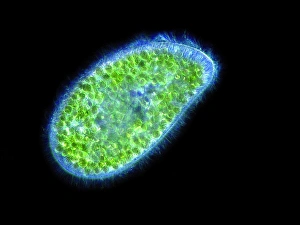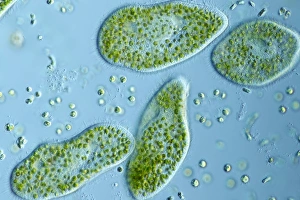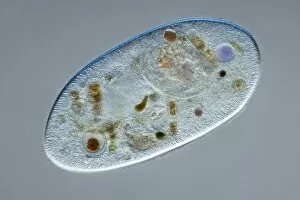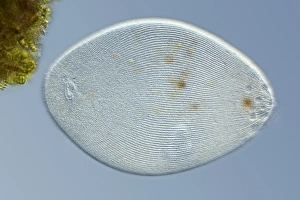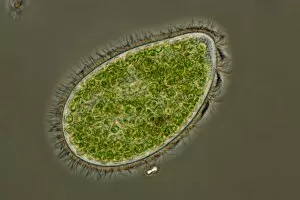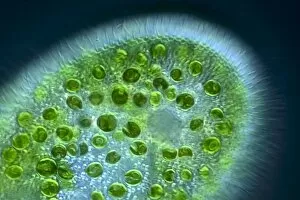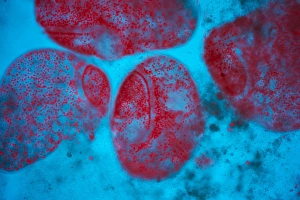Zoochlorella Collection
"Discovering the Intricate World of Zoochlorella: Unveiling Paramecium bursaria Protozoan through Micrographs" In the realm of microscopic wonders
All Professionally Made to Order for Quick Shipping
"Discovering the Intricate World of Zoochlorella: Unveiling Paramecium bursaria Protozoan through Micrographs" In the realm of microscopic wonders, a fascinating creature known as Paramecium bursaria protozoan takes center stage. Through mesmerizing micrographs, we are granted an exclusive glimpse into its intricate world. As our eyes delve into these images, we witness the delicate beauty of this ciliate protozoan. Its translucent body dances gracefully under the light microscope's lens, captivating us with its ethereal presence. The micrograph C014/4676 unveils a stunning view that showcases the unique characteristics of this remarkable organism. The symbiotic relationship between Paramecium bursaria and zoochlorella is unveiled in these snapshots. Zooming closer into their interaction, we observe tiny green algae called zoochlorella residing within the cytoplasmic vacuoles of P. Bursaria cells. This mutualistic association allows both organisms to thrive harmoniously – P. Bursaria provides shelter and nutrients while zoochlorella contributes through photosynthesis. Micrograph C016/8579 offers another perspective on this extraordinary partnership, highlighting how zoochlorella becomes an integral part of P. Bursaria's life cycle by providing essential sustenance for its survival. Through these glimpses into their microscopic world, we gain appreciation for the complexity hidden within seemingly simple organisms like Paramecium protozoa. These light micrographs reveal intricate structures such as contractile vacuoles responsible for osmoregulation and cilia that enable locomotion. As scientists continue to study these captivating creatures, they unravel more secrets about their behavior and ecological significance in aquatic ecosystems worldwide. From understanding their role in nutrient cycling to exploring potential applications in biotechnology or environmental remediation – every discovery brings us closer to unlocking nature's mysteries.

